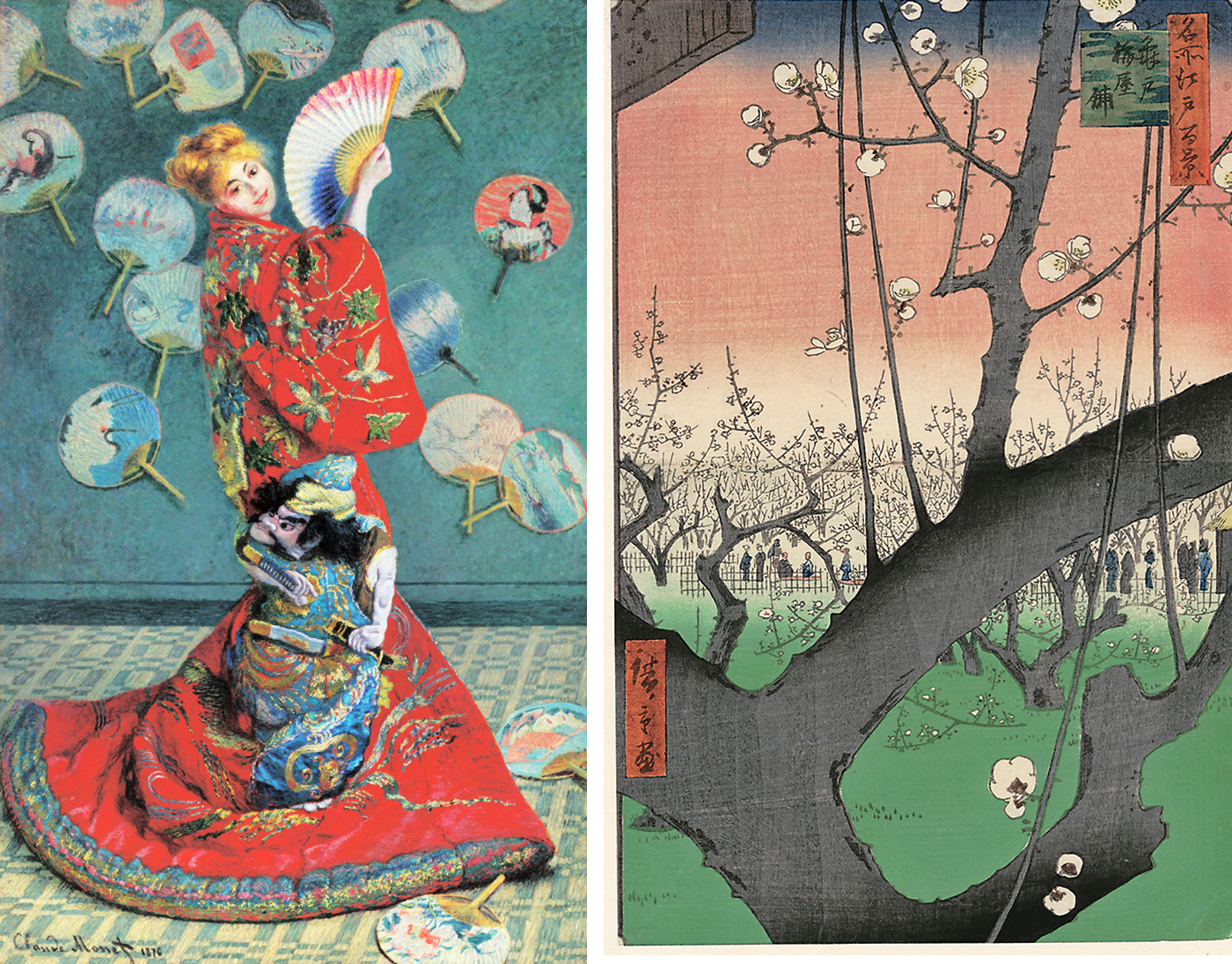In the decades after Japan was forcibly opened to large-scale international trade in the early 1850s, a fever spread across Europe for items from the exotic country: its textiles, ceramics, paper fans, woodblock prints and more. Meanwhile, the term "Japonism" was coined to describe works made in Europe and the U.S. that incorporated motifs and aesthetic principles from the fresh new imagery that adorned such imported goods.
Among its almost 150 exhibits, "Looking East: Western Artists and the Allure of Japan from the Museum of Fine Arts, Boston" at the Setagaya Museum of Art introduces many Japonism items alongside some of the original Japanese works that provided inspiration.
In the exhibition's first section, titled "Taste for Japan," is a selection of woodblock prints by Utagawa Hiroshige illustrating his use of dramatic framing devices. One print from his series "One Hundred Famous Views of Edo" reveals a view of a distant shrine through a section of a circular opening in an otherwise blank wall. In "Plum Estate, Kameido" (1857), Hiroshige places a black tree in the immediate foreground, blocking off much of the view behind. This, along with another print in this section, was copied almost to the letter by Vincent van Gogh. Many other artists in Europe incorporated similar compositional devices and unusual viewpoints into their paintings — as would photographers, the exhibition later shows.


















With your current subscription plan you can comment on stories. However, before writing your first comment, please create a display name in the Profile section of your subscriber account page.